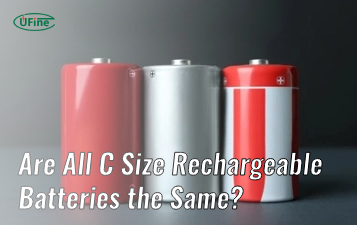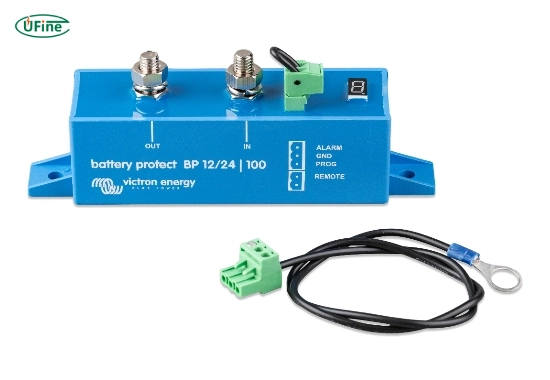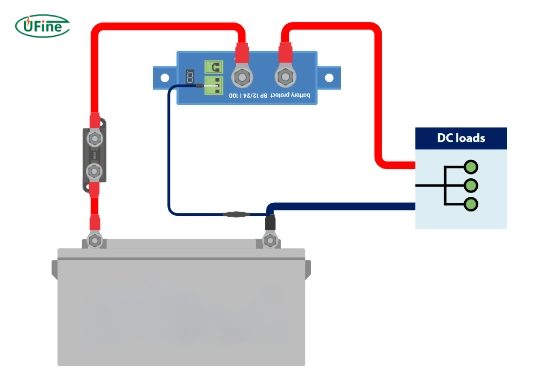
- Part 1. What is a battery protector?
- Part 2. Why do lithium batteries need protection?
- Part 3. How does a battery protector work?
- Part 4. What types of battery protectors are there?
- Part 5. What features should you look for in a battery protector?
- Part 6. What happens if you don't use a battery protector?
- Part 7. Is a BMS the same as a battery protector?
- Part 8. Can you install a battery protector yourself?
- Part 9. Best use cases for a battery protector
- Part 10. How to choose the right battery protector?
- Part 11. FAQs about battery protectors
A battery protector is a small but powerful device that protects your lithium battery from overcharging, deep discharging, and short circuits.
You’ve probably heard about battery protectors if you’re using lithium batteries for solar systems, RVs, boats, or off-grid setups. But do you need one? And how exactly do they work?
In this in-depth guide, we’ll explain everything you need about battery protectors in plain English. Whether you’re a beginner or an experienced user, this article will help you decide if a battery protector is right for your setup.
Part 1. What is a battery protector?
A battery protector is an electronic device connecting your lithium battery and the load (the devices powered by the battery). Its main job is to monitor the battery’s voltage and automatically disconnect the load when the voltage drops too low or rises too high.
In simple terms, it acts as a guardian for your battery. Without one, you run the risk of damaging your battery permanently.
Part 2. Why do lithium batteries need protection?
Lithium batteries are powerful and efficient, but they’re also sensitive. They need to stay within specific voltage limits to operate safely.
- Overcharging can cause overheating or even fire.
- Deep discharging (draining the battery too far) can shorten its lifespan or kill it altogether.
- Short circuits can damage the battery or other connected devices.
A battery protector helps prevent all these issues by cutting off the power automatically when it detects danger.
Part 3. How does a battery protector work?
Think of a battery protector as a smart switch. It continuously watches your battery’s voltage. If the voltage goes too high or too low, it disconnects the load (your appliances or system) to protect the battery.
Here’s a step-by-step of how it works:
- Monitors voltage in real-time.
- Compares the voltage to safe limits (set by you or the factory).
- Disconnects when the voltage is unsafe.
- Reconnects when the voltage returns to a safe range.
Some models also have Bluetooth or display screens, so you can easily check battery status or change settings.
Part 4. What types of battery protectors are there?
There are several types of battery protectors, each suited for different uses:
- 12V/24V/48V Protectors: Choose based on your battery system voltage.
- Single Battery Protectors: For simple setups like car batteries or scooters.
- Multi-Battery Protectors: Ideal for solar or off-grid systems with several batteries.
- Smart Protectors: Bluetooth-enabled and app-controlled.
Make sure to pick one that matches your battery type and system size.
Part 5. What features should you look for in a battery protector?
When buying a battery protector, don’t just go for the cheapest one. Look for key features like:
- Adjustable cut-off voltage: So you can set your own limits.
- Overcurrent protection: Prevents damage from sudden power surges.
- Reverse polarity protection: Protects against wiring mistakes.
- LED indicators or display: Easy-to-read voltage status.
- Bluetooth or Wi-Fi: Monitor and control from your phone.
These features make a big difference in safety, convenience, and battery life.
Part 6. What happens if you don’t use a battery protector?
Without a battery protector, your lithium battery is constantly at risk. Here’s what could go wrong:
- Over-discharge: You drain the battery too far, and it never charges again.
- Overcharge: The battery gets too hot, swells, or catches fire.
- Short-circuit: Components burn out, costing you more than the battery itself.
- Battery lifespan drops: You replace batteries more often, wasting money.
In short, skipping a battery protector is like driving a car with no brakes.
Part 7. Is a BMS the same as a battery protector?
Not quite. A Battery Management System (BMS) is built into most lithium batteries and provides internal protection. But it doesn’t always protect the external load side of the system.
A battery protector is an external device that safeguards the entire system, not just the battery cell. For full protection, it’s smart to use both.
Part 8. Can you install a battery protector yourself?
Yes, most battery protectors are plug-and-play and easy to install. You just need to:
- Connect the battery protector between your battery and your load (devices).
- Follow the wiring diagram in the manual.
- Set your desired voltage cut-off limits (if adjustable).
- Power on and test the system.
If you’re unsure, asking an electrician or checking with the battery manufacturer is always safe.
Part 9. Best use cases for a battery protector
Battery protectors aren’t just for professionals. Here are some significant use cases:
- RV and camper vans: Keep your batteries safe while off-grid.
- Solar energy systems: Prevent battery damage from over-discharge at night.
- Boats and marine systems: Handle fluctuating battery loads safely.
- Electric scooters and bikes: Extend the life of your battery.
- Backup power systems: Ensure reliable power during outages.
Wherever there’s a lithium battery, a protector can help.
Part 10. How to choose the right battery protector?
Here’s a quick checklist:
| Feature | Why It Matters |
|---|---|
| Correct voltage (12V/24V/48V) | Must match your battery system |
| Amp rating | Should handle your total load current |
| Adjustable settings | Customize cut-off points for your battery type |
| Safety features | Reverse polarity, overcurrent, short circuit protection |
| Smart monitoring | Bluetooth or display helps manage your system |
Choose a protector that meets your system needs, not just the cheapest.
Part 11. FAQs about battery protectors
Do all lithium batteries need a battery protector?
Yes, especially in systems where the battery is powering external devices. While many lithium batteries have a built-in BMS, they don’t always protect your entire setup.
Can a battery protector fix a damaged battery?
No, battery protectors are preventive tools. Once a battery is damaged, it usually can’t be repaired.
How much does a good battery protector cost?
Prices range from $15 to $100+, depending on features. Even a mid-range one can save you hundreds by protecting your battery.
Can I use the same protector for multiple batteries?
Only if they are connected in parallel and match the voltage and current limits of the protector. For series battery setups, use a suitable multi-battery protector.
Will a battery protector work with lead-acid or AGM batteries?
Yes, but ensure it supports your battery’s voltage range and chemistry. Some are made specifically for lithium types.
Related Tags:
More Articles

Are All C Size Rechargeable Batteries the Same?
Compare rechargeable C cell batteries by type, voltage, capacity, and lifespan. Find the best C batteries for toys, flashlights, and emergency devices.
Learn how to safely recharge 18650 batteries, choose the best 18650 battery charger, and extend battery life with expert tips and practical strategies.
12 Volt Batteries: How Long Can They Really Last?
Discover the real lifespan of 12V batteries. Compare lead-acid, AGM, gel, and lithium (LiFePO₄) batteries — and find out why LiFePO₄ lasts over 10 years.
Lithium-ion vs Lithium Polymer Battery: Which is Better?
Compare Li-ion and LiPo batteries in energy, safety, lifespan, and uses. Learn which battery is best for drones, laptops, and wearables.
Power Pack Battery vs. Power Bank: What’s the Difference?
Compare power pack battery and power bank: capacity, devices, portability, and best uses to pick the right portable battery pack.




